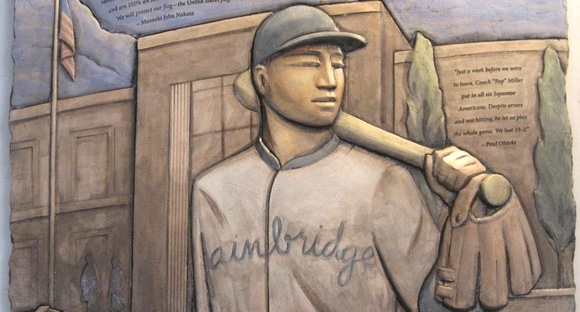In 1942, more than 110,000 Japanese-Americans were abruptly removed from their homes and forced to re-locate on ten internment camps scattered through-out the western United States. Among the interned was Kenichi Zenimura; a star player, coach and organizer in the California Japanese League. Upon arriving at the Gila River War Relocation Center, he immediately began transforming a patch of harsh Arizona desert into a beautiful baseball oasis. Considering the lack of resources available to him, this required a rare brand of ingenuity. According to the Nisei Baseball Research Project, he extended a pipe from one of the laundry rooms to grow the outfield grass. Children were recruited to meticulously remove the pebbles from the infield dirt and re-purpose them as ground cover in the dugouts and stands. Along with excess wood from the lumber yard, every other post was removed from the perimeter fence and used to construct a backstop and bleachers. Flour was acquired from the dining hall to chalk the foul lines and high-growing shrubs were planted along the path of the outfield "wall". Other internment camps built baseball fields of their own, but "Zenimura Stadium" was the crown jewel (a literal diamond in the rough).

